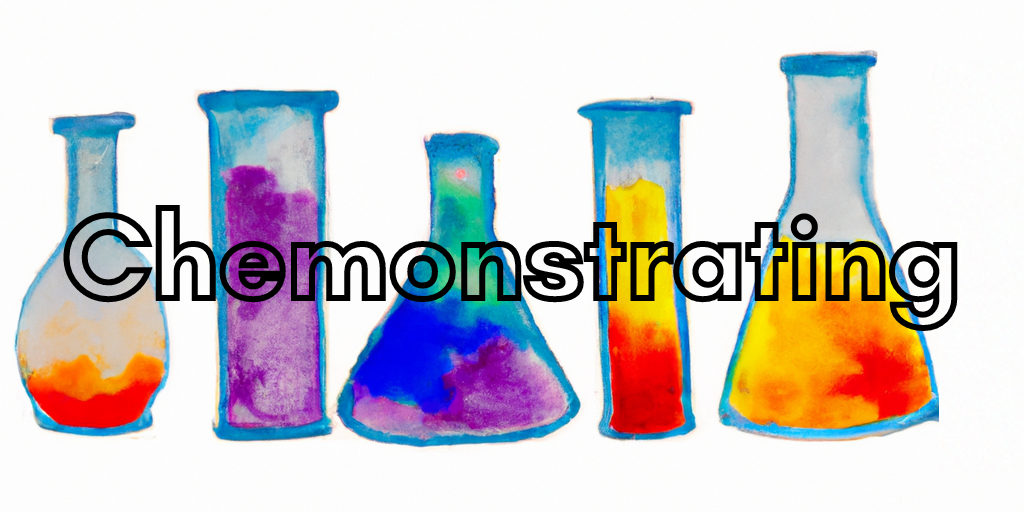Blue Bottle
Purpose:
To demonstrate a re-occurring oxidation-reduction reaction and to stimulate interest in chemical reaction mechanisms.
Materials:
- Rubber stopper
- 500mL Florence/boiling/round-bottom flask
Reagents:
- 0.5M Potassium hydroxide (KOH)
- Methylene blue indicator
- Dextrose
Hazards and PPE:
- Wear approved safety goggles and gloves.
Protocol:
Preparation
- Add 300mL 0.5M KOH to stoppered Florence flask.
- 5 to 10 minutes prior to demonstration, add 10g dextrose to flask and swirl to mix.
Demonstration
- Add 6-8 drops methylene blue indicator solution (0.2g crystal per 100mL DI H2O) to flask.
- A deep blue solution will result when swirled.
- The blue color will disappear after a minute or two.
- To demonstrate, hold a thumb over the stopper and shake. The blue color will return, then disappear again. The longer the flask is shaken, the longer it will take to disappear.
Additional Notes:
- If the demonstration is repeated many times, it will be necessary to loosen the stopper for a moment or two, so that the oxygen can be replenished.
- The demo can be performed with reazurin indicator solution in place of methylene blue, producing a shift from reddish-blue to blue to colorless.
- Another variation involves adding reazurin to the original solution, then adding methylene blue after the solution becomes colorless. When shaken, the solution will shift from colorless to red to blue to violet to red to colorless.
Disposal:
- Solution can be poured down the sink with excess water.
Reactions:
- Methylene blue, an oxidation-reduction indicator, is deep blue in the oxidized state and colorless in the reduced state.
- When the colorless solution is shaken, the oxygen in the air above the solution changes the methylene blue to its blue oxidized form. When allowed to stand, the oxidized methylene blue is gradually reduced by the dextrose to the colorless form.
Citations:
- ICE Demonstration Workshop, University of Arizona, 1987.
- Shakharshiri, Bassam; Chemical Demonstrations, Volume II, 1985.
Videos:
